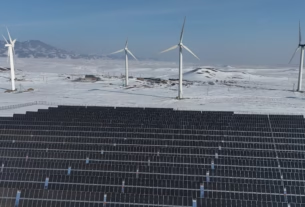In Short : Citing unidentified national security concerns, the U.S. administration has ordered Danish energy company Ørsted to halt all work on its almost finished Revolution Wind offshore wind project off Rhode Island. The $1.5 billion project was expected to power 350,000 houses in Connecticut and Rhode Island when it was around 80% finished.
Shock to Renewable Momentum from Regulations
The stop-work order is the second round of involvement in U.S. offshore wind construction this year, and it was issued by the Bureau of Ocean Energy Management (BOEM). The first focused on Equinor’s Empire Wind project in New York, exposing a larger trend of federal opposition to the growth of sustainable energy. In response, Ørsted said it is considering its financial and legal alternatives.
High Risks to Infrastructure and Employment
Industry associations caution that stopping such an established initiative will jeopardize American manufacturing, port upgrading, and the creation of green jobs. Offshore wind is strategic, driven by infrastructural growth, and essential for powering AI and data centers, according to the National Ocean Industries Association.
Wider Consequences: A Flashpoint for Law and Investment
This action raises concerns about project viability and investor trust, signaling further uncertainty for U.S. renewable developers. Planning for long-term clean infrastructure is made more difficult by offshore wind’s growing susceptibility to political unrest. Offshore wind was once a promising pillar of the energy transition.




